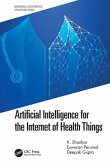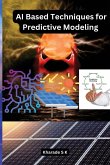Traditional energy resources are losing significance due to global warming and the quick exhaustion of fossil fuels. Non- conventional energy resources like solar, wind, biomass, etc, can be highly beneficial in the upcoming days. Incorporating renewable energy sources (RES) with electric grids has gained significant attention and poses several challenging issues among the research community. The discontinuous and uncontrollable nature of solar energy surges the difficulty of grid management and increases the difficulty in handling the production and utilization of electrical energy. Accurate solar power prediction (SPP) models are necessary for optimal grid stability management. The present model mostly concentrates on the solution and the predicting parts that remain unaddressed. The Maximum Power Point Tracking (MPPT) lacks most of the forecasting mechanism; hence it proves to be a generic model. The current MPPT models are inefficient in tracking the maximum power point because of the sunshine variation. The emergence of Artificial Intelligence (AI) technique and their adoption of various techniques have designed more than one domain automatically. The idea of Smart Grid (SG) combines consumer solutions quantity of technologies and meets numerous regulatory drivers and policies. SG is the 2 next generation power system which utilizes bi-directional flows of information and electricity. The capacity of data amalgamation, reliable data communication, system monitoring, secured data scrutiny, and supervisory and local controls of the SG could fulfil the consumer-supplier demand needs like decline in the power utilization, cost of energy and enhance the efficiency of system. Figure 1.1 illustrates the concept of SGs.








